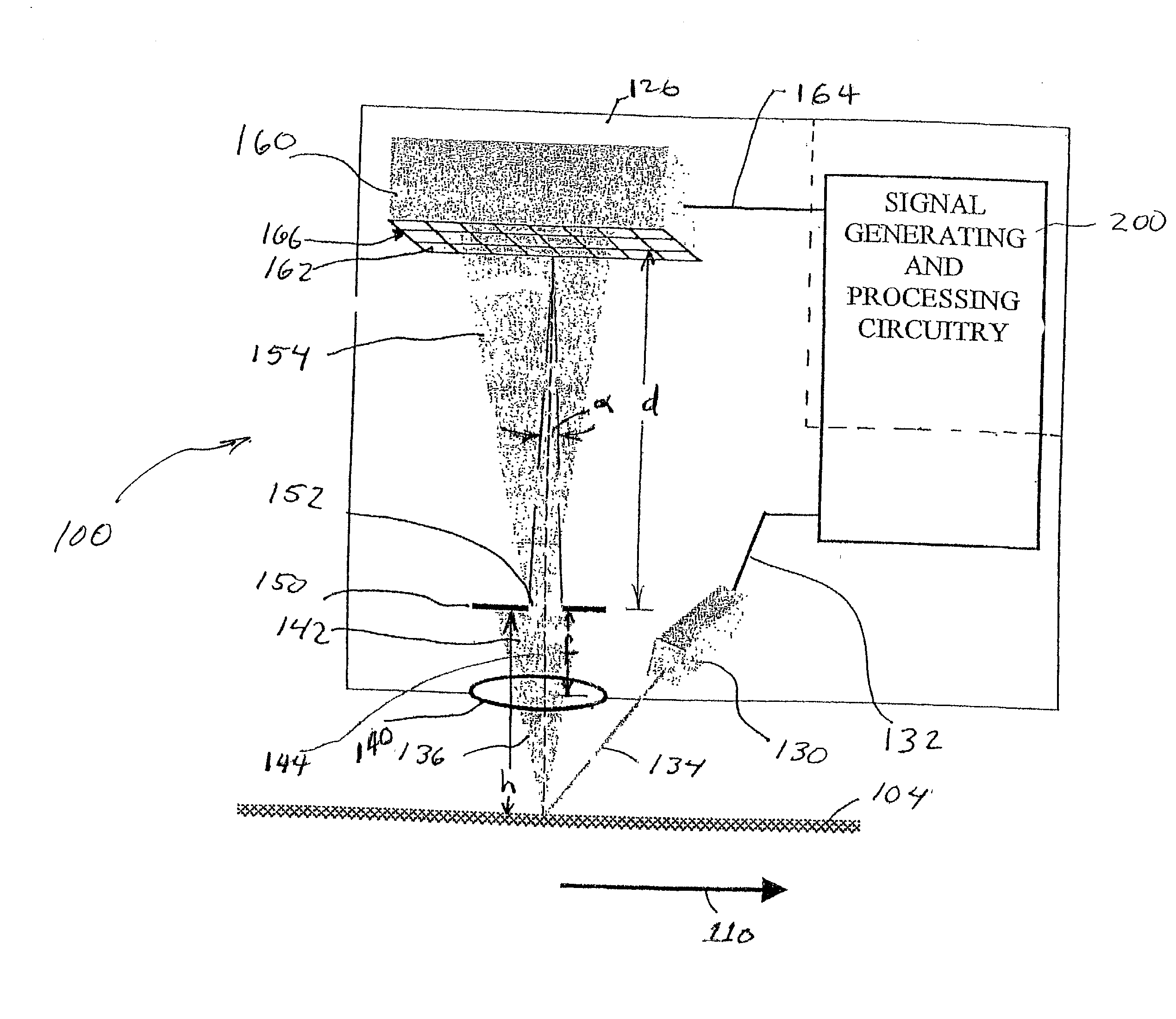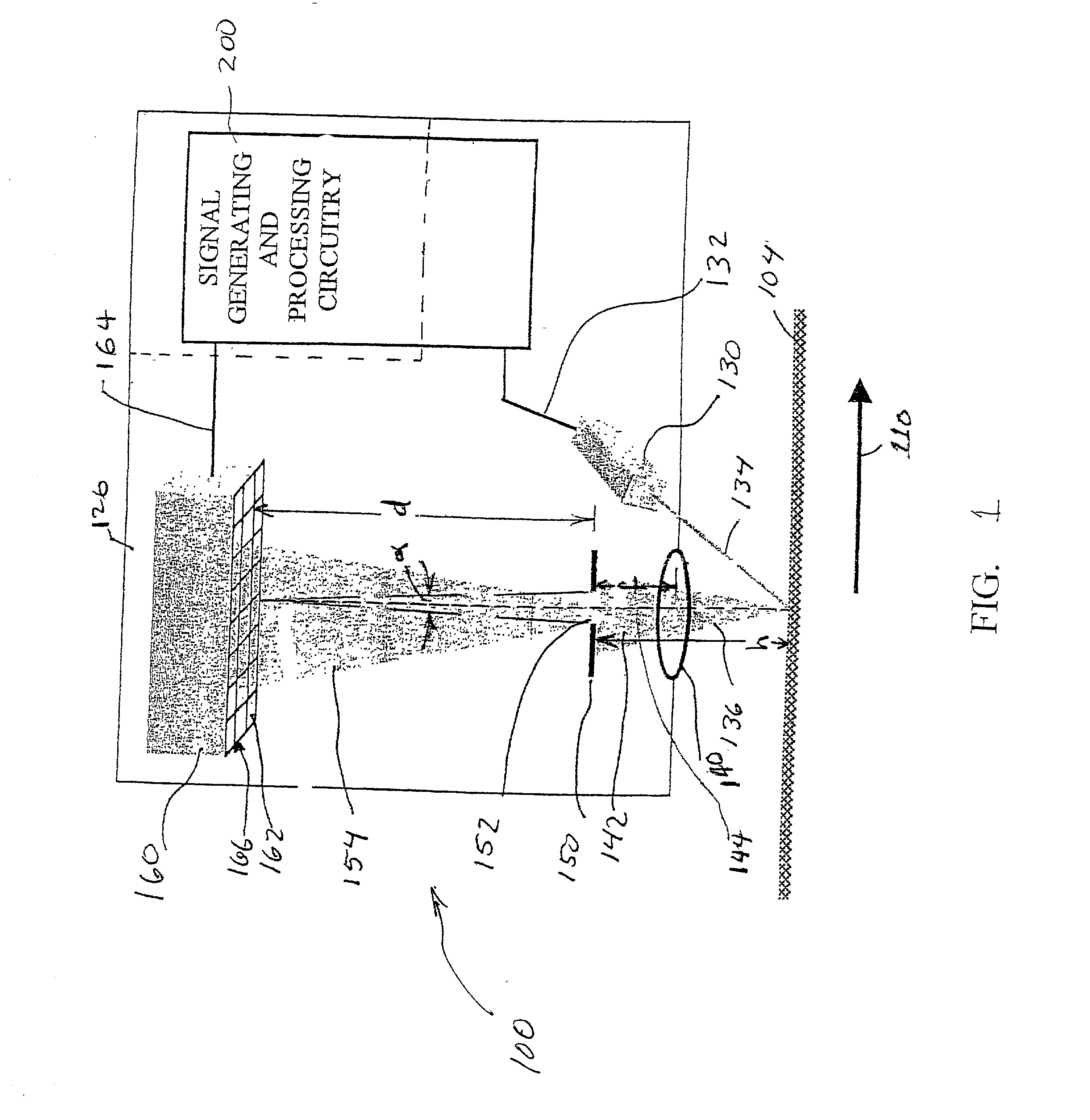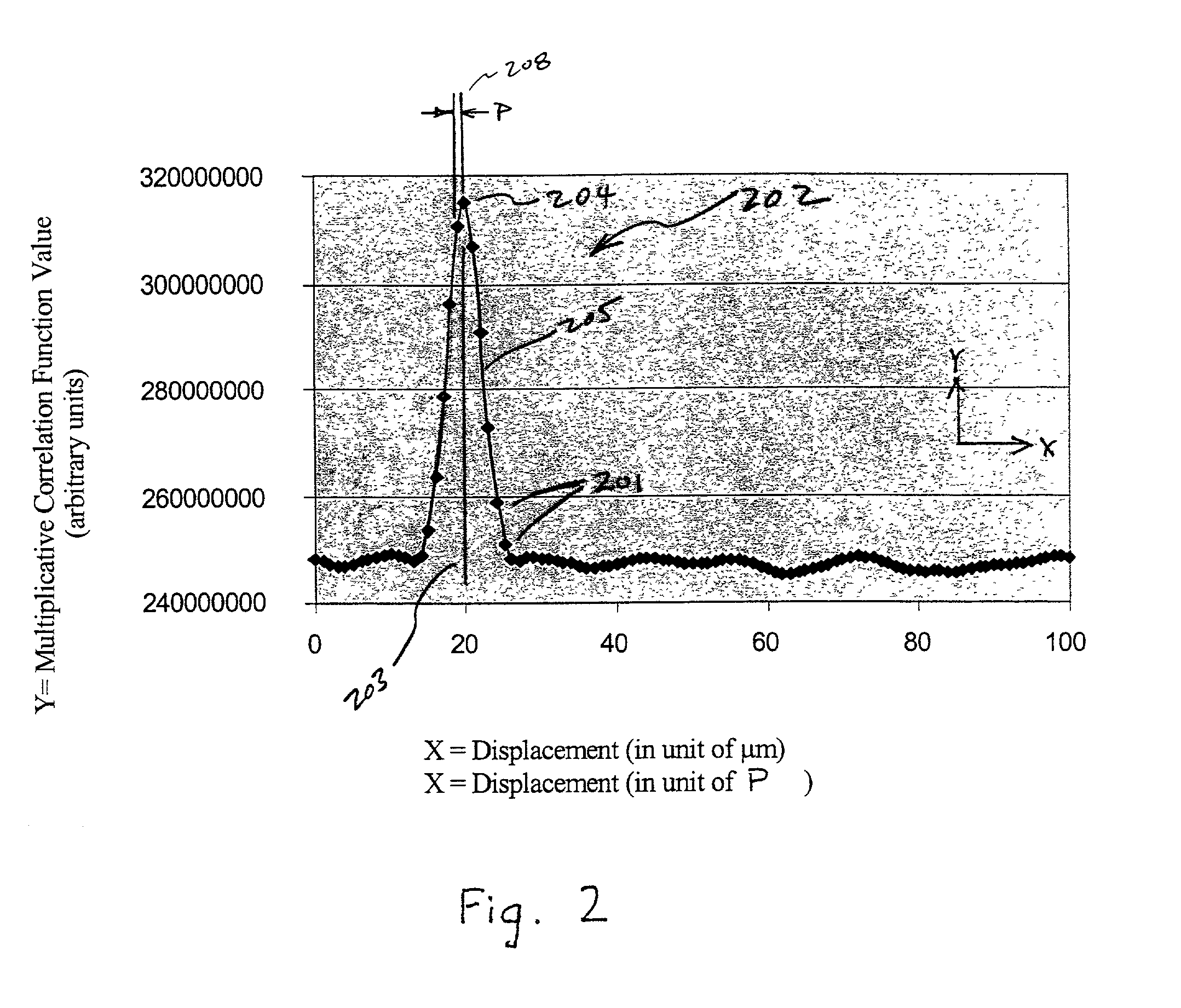Systems and methods for high-accuracy displacement determination in a correlation based position transducer
a position transducer and high-accuracy technology, applied in the field of image correlation, can solve the problems of insufficient consideration of the computational complexity and associated processing time required to reduce the computational complexity and the associated processing time, and the effect of preventing the position determination to a high resolution and accuracy in a commercially marketable form
- Summary
- Abstract
- Description
- Claims
- Application Information
AI Technical Summary
Benefits of technology
Problems solved by technology
Method used
Image
Examples
Embodiment Construction
[0054] FIG. 1 is a block diagram of a speckle-image-based optical position transducer 100. The speckle-image-based optical position transducer 100, as well as various suitable mechanical and optical configurations, image correlation methods, and associated signal processing circuitry are described in greater detail in co-pending U.S. application Ser. No. 09 / 584,264, incorporated herein by reference in its entirety.
[0055] The speckle-image-based optical position transducer 100 shown in FIG. 1 includes a readhead 126, signal generating and processing circuitry 200 and an optically rough surface 104. In FIG. 1, the components of readhead 126, and their relation to the optically rough surface 104, are shown schematically in a layout that generally corresponds to an exemplary physical configuration, as further described below.
[0056] In particular, the optically diffusing, or optically rough, surface 104 is positioned adjacent to an illuminating and receiving end of the readhead 126, such...
PUM
 Login to View More
Login to View More Abstract
Description
Claims
Application Information
 Login to View More
Login to View More - R&D
- Intellectual Property
- Life Sciences
- Materials
- Tech Scout
- Unparalleled Data Quality
- Higher Quality Content
- 60% Fewer Hallucinations
Browse by: Latest US Patents, China's latest patents, Technical Efficacy Thesaurus, Application Domain, Technology Topic, Popular Technical Reports.
© 2025 PatSnap. All rights reserved.Legal|Privacy policy|Modern Slavery Act Transparency Statement|Sitemap|About US| Contact US: help@patsnap.com



